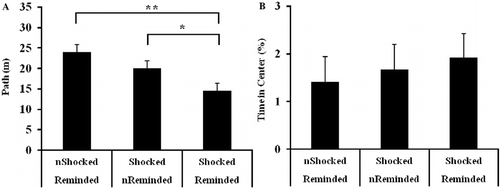Figures & data
Figure 1. Timeline for behavioral testing. The initial stressor consisted of exposure to electrical footshock during an IA training trial. To re-activate the memory for the aversive event, reminders of the stressor (IA retrieval trials) were performed 30 min prior to the retention trial on the Y-maze and again 30 min prior to the probe trials on the learning strategy tasks. VPWM = visible-platform water maze; OF = open field test.
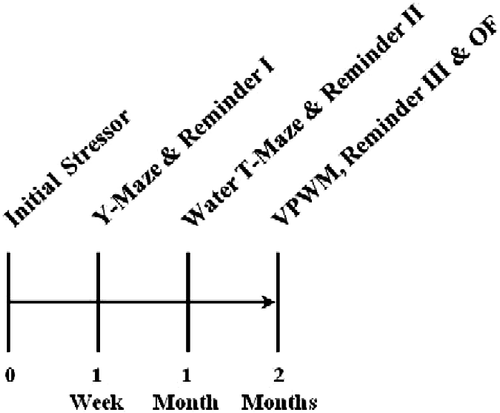
Figure 2. (A) Information and retention trials on a Y-maze task that assesses spatial recognition memory. Training and probe trials on (B) dual-solution versions of the water T-maze task and (C) the VPWM task, that assess learning strategy.
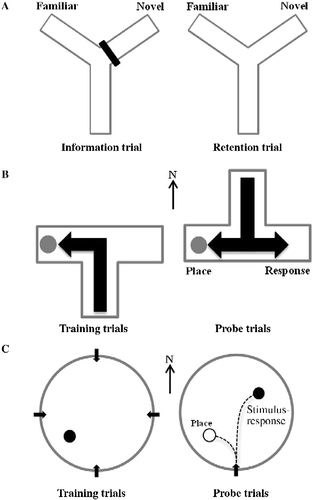
Figure 3. Results from an IA paradigm designed to induce the initial stressor (electrical footshock) and subsequently reactivate the aversive memory. (A) During the training phase of the IA task, there were no differences in the latency to enter the dark compartment of a shuttle box where a brief footshock was administered. (B) During the IA retrieval trials (reminders), which were conducted 1 week, 1 month, and 2 months after exposure to footshock (IA training trial), longer latencies to enter the dark compartment were exhibited by rats administered the initial footshock relative to rats that were not exposed to footshock during IA training (***p < 0.001). For rats exposed to the footshock and exposed to an IA retrieval trial, latencies to enter the dark compartment increased from the first reminder relative to the second and third reminders (*p < 0.05). “n” denotes rats that were not administered a footshock during the IA training trial or not reminded of the shock (IA retrieval trials). Group sizes were as follows: non-shocked/reminded (n = 15), shocked/non-reminded (n = 15), shocked/reminded (n = 17). Initial crossover latencies prior to administration of footshock on the IA training trial were examined by ANOVA. Subsequent crossover latencies on IA retrieval trials were examined by repeated measures ANOVA, within-group orthogonal contrasts, and independent sample t-tests. Data are represented as group mean ± SEM.
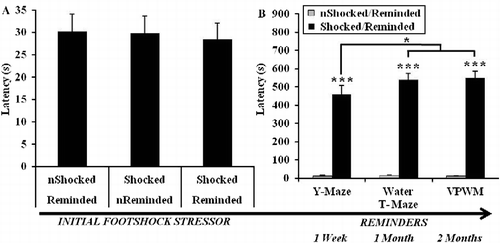
Figure 4. (A) Activity and (B) spatial recognition memory exhibited during the retention trial of a Y-maze task. (A) Both groups of rats exposed to electrical footshock (IA training trial) made fewer arm entries on the retrieval trial of the Y-maze task than the group not exposed to footshock (**p < 0.01). (B) Neither footshock alone, nor reminder of the footshock, impacted spatial memory as all stress conditions exhibited recognition of the novel arm (***p < 0.001 novel vs. familiar arm). “n” denotes rats that were not administered a footshock during the IA training trial or not reminded of the shock (IA retrieval trial). Group sizes were as follows: non-shocked/reminded (n = 15), shocked/non-reminded (n = 15), shocked/reminded (n = 14). Group differences in activity and spatial memory were examined by ANOVA. Paired samples t-tests were conducted to examine within group spatial memory. Data are represented as mean ± SEM.
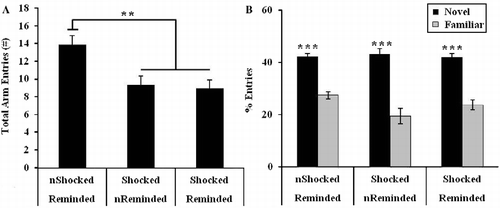
Figure 5. Results from a dual-solution water T-maze task designed to examine (A) learning on training trials and (B) learning strategy on a probe trial. Rats exposed to electrical footshock (IA training trial), but not reminded of the stressor (IA retrieval trial), preferred a response strategy compared with a place strategy (*p < 0.05). Rats exposed to footshock (IA training trial) and subsequently reminded of the stressor (IA retrieval trial) 30 min prior to the probe trial also tended to prefer a response strategy compared with a place strategy (
![]() p = 0.09). “n” denotes rats that were not administered a footshock during the IA training trial or not reminded of the shock (IA retrieval trial). Group sizes were as follows: non-shocked/reminded (n = 15), shocked/non-reminded (n = 15), shocked/reminded (n = 17). Learning during training trials, which is represented as group mean ± SEM, was analyzed by repeated measures ANOVA. Learning strategy preference, which is represented categorically, was analyzed by χ2 analyses.
p = 0.09). “n” denotes rats that were not administered a footshock during the IA training trial or not reminded of the shock (IA retrieval trial). Group sizes were as follows: non-shocked/reminded (n = 15), shocked/non-reminded (n = 15), shocked/reminded (n = 17). Learning during training trials, which is represented as group mean ± SEM, was analyzed by repeated measures ANOVA. Learning strategy preference, which is represented categorically, was analyzed by χ2 analyses.

Figure 6. Results from a dual-solution VPWM task designed to examine (A) learning on training trials and (B) learning strategy on a probe trial. Rats exposed to electrical footshock (IA training trial) and reminded of the stressor (IA retrieval trial) 30 min prior to the probe trial preferred a stimulus-response (S-R) strategy compared with a place strategy (*p < 0.05). “n” denotes rats that were not administered a footshock during the IA training trial or not reminded of the shock (IA retrieval trial). Group sizes were as follows: non-shocked/reminded (n = 15), shocked/non-reminded (n = 15), shocked/reminded (n = 17). Learning during training trials, which is represented as group mean ± SEM, was analyzed by repeated measures ANOVA. Learning strategy preference, which is represented categorically, was analyzed by χ2 analyses.
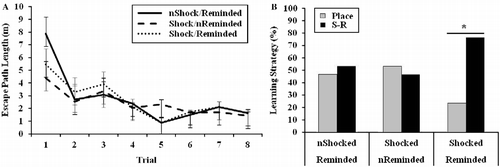
Figure 7. (A) Activity and (B) anxiety exhibited during an open field test. Rats repeatedly reminded of the electrical footshock (IA retrieval trials) exhibited shorter path lengths relative to rats that were not exposed to footshock (**p < 0.01) and to rats that were never reminded of the footshock (*p < 0.05). Stress condition does not impact the percentage of time in the center of the open field. “n” denotes rats that were not administered a footshock during the IA training trial or not reminded of the shock (IA retrieval trial). Group sizes were as follows: non-shocked/reminded (n = 15), shocked/non-reminded (n = 15), shocked/reminded (n = 17). Group differences in activity and anxiety were examined by ANOVA and, when warranted, Fisher's LSD post hoc tests. Data are represented as group mean ± SEM.
